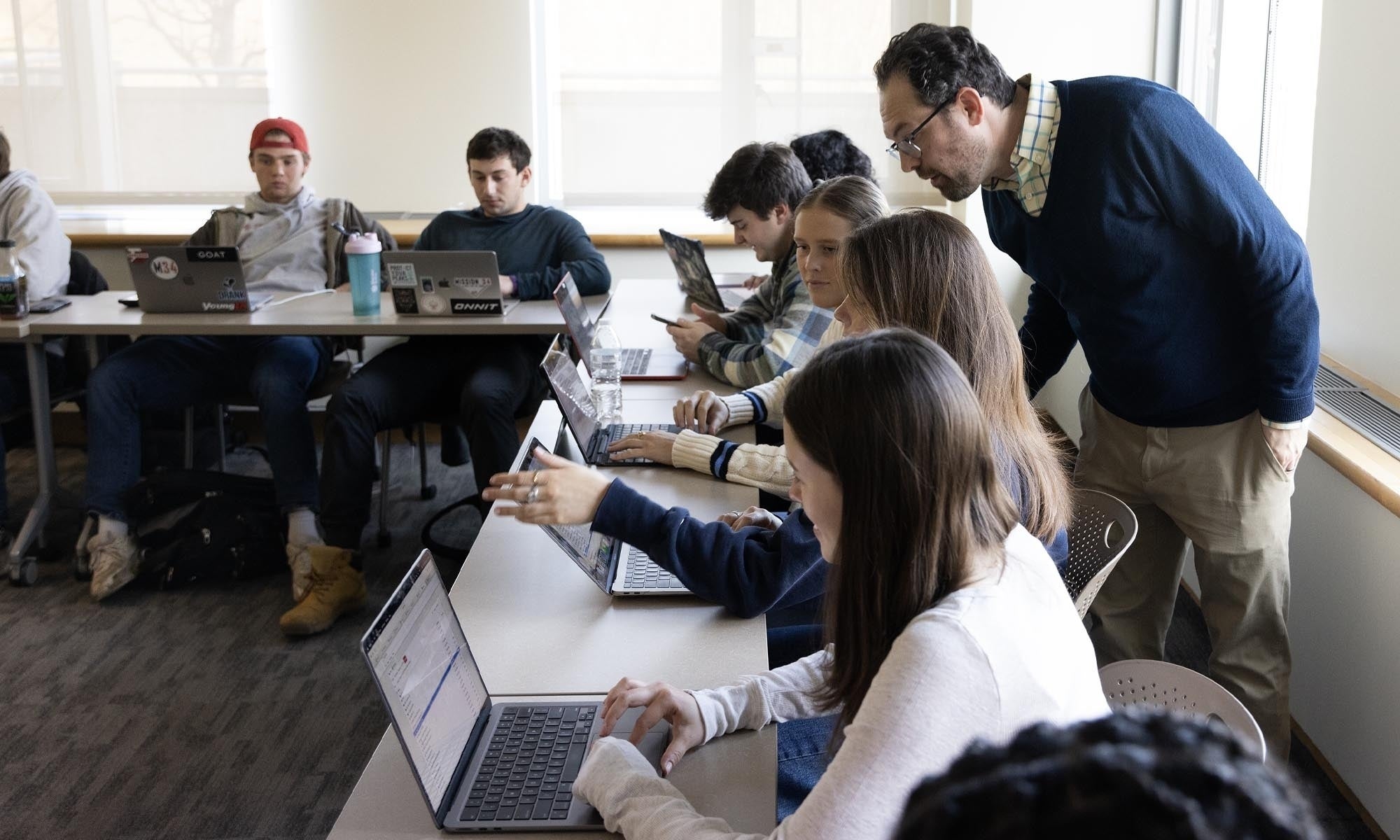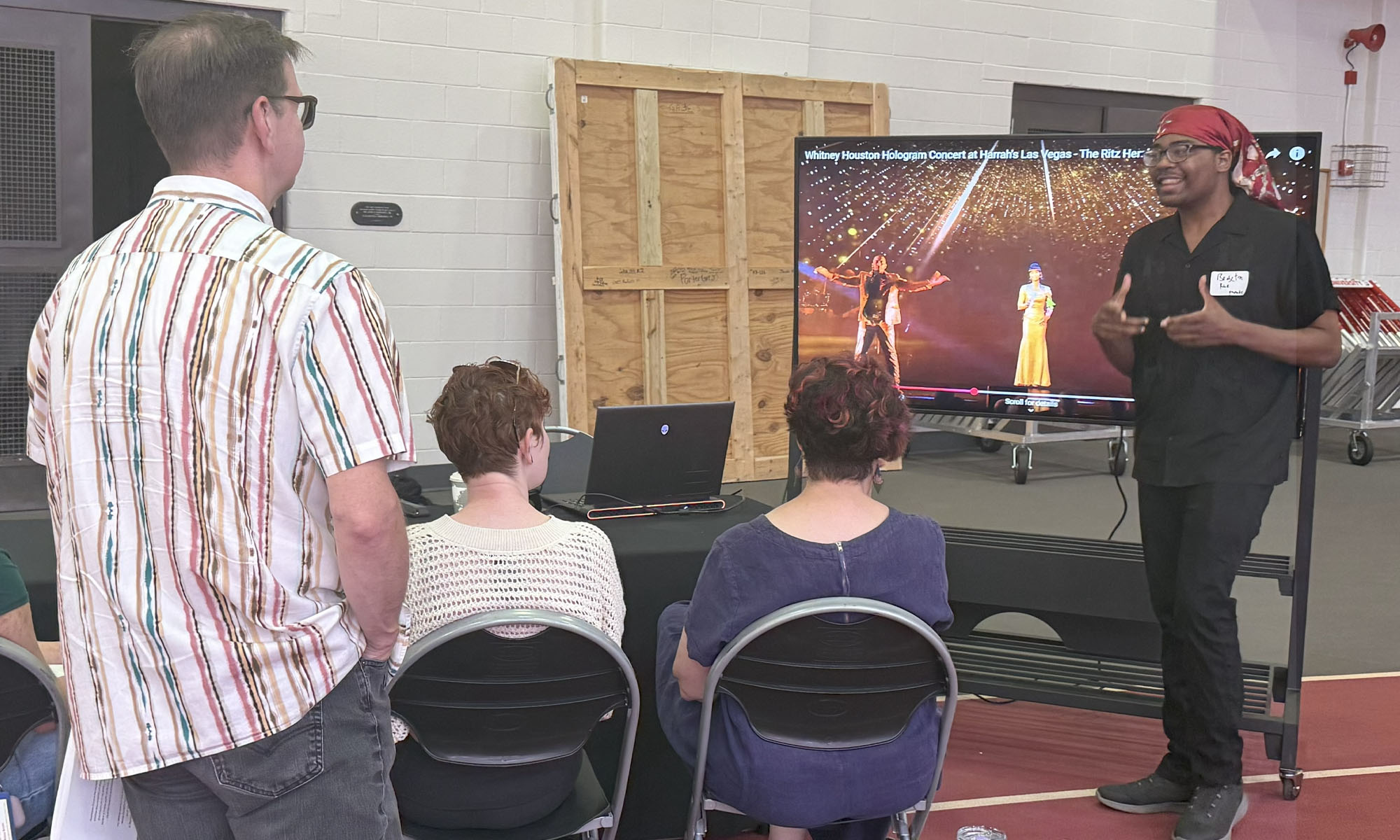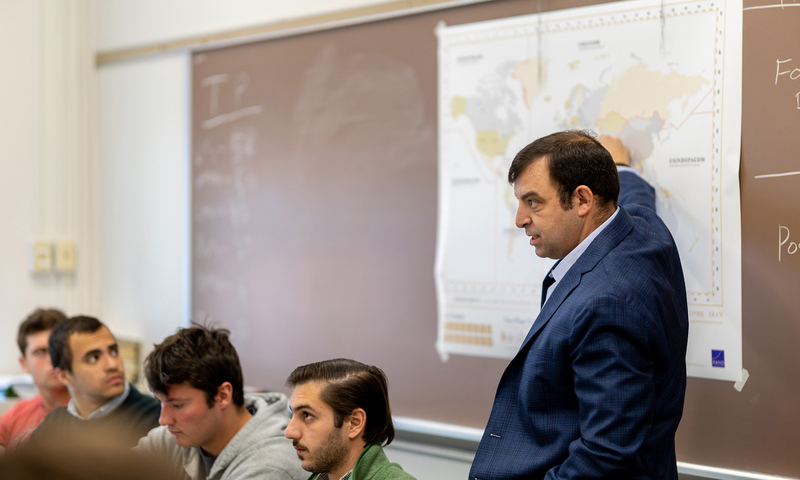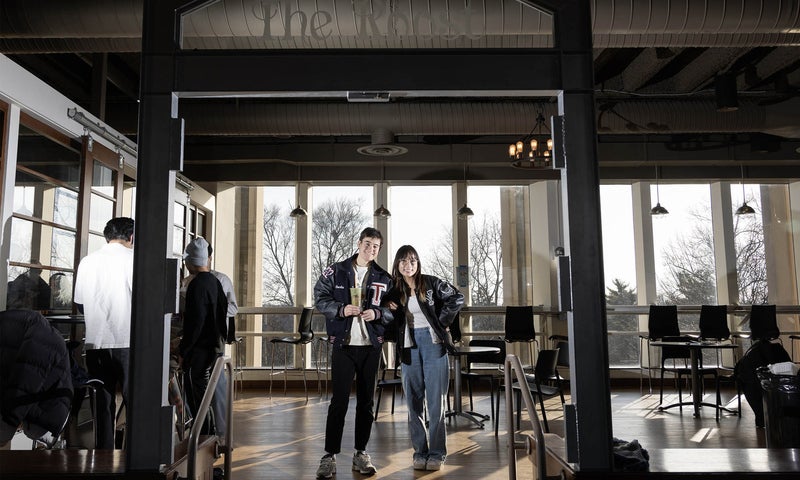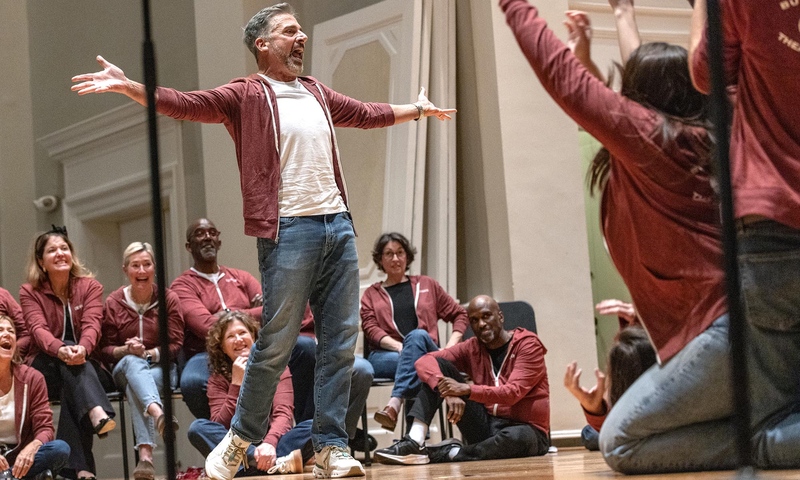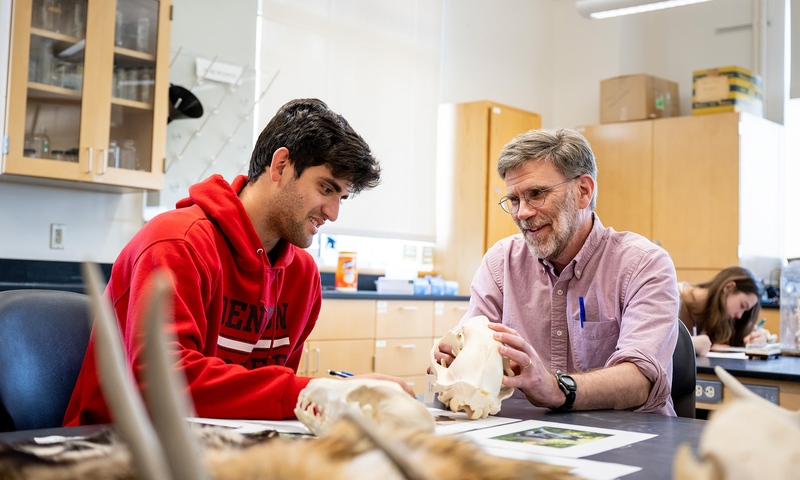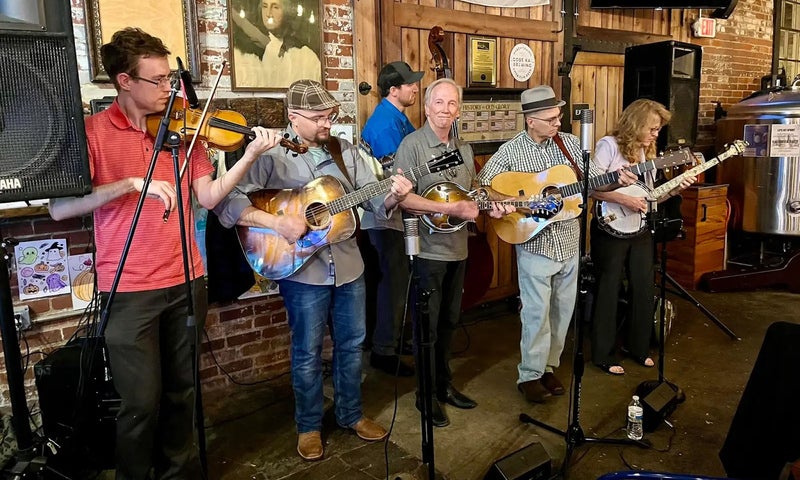If artificial intelligence can solve a complex problem, write an essay, and illustrate a story, how does that impact student learning? This fall, Denison faculty held a symposium to share their insights and approaches as they address the challenges and opportunities of the AI revolution in higher education.
Denison Provost Kim Coplin said the future of AI is here: Students are already using AI. The symposium gave faculty information and tools for the AI paradigm. “As teachers, we need to enable our students to navigate, question, and use AI ethically,” she said.
The event was only the latest in Denison’s concerted, campus-wide effort to advance AI in the classroom. Faculty say the college’s studied embrace of AI — with equal parts innovation and careful deliberation — is paying dividends and putting Denison well out in front of many other institutions.
“We’ve been working on this for a couple of years, and we are way ahead of the curve,” said Dean of the Faculty and Professor of Biology Jeff Thompson. At a recent higher education leadership conference about AI, Thompson was both “heartened and dismayed” to find that most of his peers at other colleges were just beginning to think about AI or “bogged down in ‘how we police it.’”
Denison, he said, has progressed to a deeper and more nuanced level of discussion.
In October, Denison is hosting The AI Certified Futures Summit, a high-impact gathering of higher education leaders who are shaping the future of AI on their campuses, in partnership with Amazon Web Services.
Last February, Denison broke ground on a new $35 million data science center — the first of its kind devoted to integrating data and the liberal arts. Denison’s career services program, ranked #2 among all U.S. colleges and universities by Princeton Review, has also incorporated AI in its signature Journey Program.
“The variety and depth of ways faculty are integrating AI into the curriculum are amazing,” said Lori Robbins, an instructional technologist with Denison’s Information Technology Services who coordinates much of the college’s AI integration efforts.
“Our faculty continue to experiment, try different things, and share with each other,” said Assistant Professor Eleni Papaleonardos, chair of the Faculty Development Committee tasked with coordinating the annual in-house symposium.
Faculty share breadth of experience at AI symposium
Faculty and staff at the symposium “choose their own adventure” as they visited stations spread throughout the Mitchell Center. They chatted with peers about tech tools and how they use AI in learning, teaching, and career preparation. The 19 sessions covered topics such as AI for Educators, How AI Can Enhance Classroom Simulations, and Visualizing Literary Text with AI.
“We wanted to pull back the curtain and share ways our colleagues are engaging AI in their classrooms,” Papaleonardos said.
Thompson likened current conversations about AI to those that occurred at the advent of calculators. “Before calculators became an accepted tool in the classroom, math professors knew that our students were using them,” Thompson said. “They had to figure out how and when to integrate them into the learning process.”
“While AI is vastly more complicated than using a calculator, the process is similar,” he said. “We have to acknowledge its existence and take ownership of the space.”
With the rapid development of generative AI, Denison faculty and staff are continually experimenting and discovering new and exciting opportunities for its use. Papaleonardos’ understanding of the benefits and limitations of AI has expanded, as has her use of the technology in her teaching.
Papaleonardos, an assistant professor of theatre, shares one example where students learn they have distinct advantages over AI: Referencing a monologue, “I’ll ask students questions about what motivates this character, then ask them to enter the same prompt in ChatGPT,” she said. “They’ll see that while it might give them some good ideas, it also generates multiple false statements and inaccuracies.”
“They quickly learn that you cannot ask ChatGPT to do something that you don’t know enough about to check for accuracy.”
How AI can positively impact learning goals and teaching
Bloom’s taxonomy, a classification of learning objectives that build toward the highest learning outcomes, was referenced in many faculty-led sessions. The taxonomy commonly refers to six degrees of learning, beginning with memorizing facts and progressing through understanding issues, applying knowledge, analyzing, and critiquing information. The uppermost levels are the ability to evaluate problems and create solutions and new ideas.
In their session, AI and Designing Writing Assignments, Regina Martin, associate professor of English and director of the Writing Program, and Nicole Green, director of the Writing Center, shared ways faculty can rethink core learning objectives to leverage AI.
For example, a former learning objective might be to increase understanding of a topic by developing and researching a question — an assignment easily accomplished today with AI. Martin and Green suggest an alternative: Students can learn at a higher level by evaluating an AI-written essay.
Bloom’s taxonomy suggests evaluation requires knowledge and understanding of a topic, as well as the ability to analyze and critique the information. In layman’s terms, a good doctor doesn’t evaluate a patient simply by noting a list of symptoms, but understands what they mean in relation to one another.
“Writing an essay outside the classroom is no longer an assessment of their understanding,” Martin said. “Instead, we’re able to assign a critical-thinking and problem-solving exercise that evaluates higher learning objectives.”
Of course, not all learning should involve AI. Martin and Green suggested tasks for students to accomplish in class, such as writing sections of drafts, composing research questions, and participating in classroom discussions about identifying evidence and analyzing information.
“We need to teach students how to make better decisions about how and when to use AI, and we need to design tasks that allow students to practice learning without AI,” said Green. “We need to help them learn how to use it ethically.”
How AI can be used to enhance career preparation
“Denison students have long been using AI for their career search,” said Melanie Murphy, executive director of the Knowlton Center for Career Exploration. “Students use AI-powered platforms that evaluate résumés, sharpen cover letters, and source job search boards.” This year, the Knowlton Center is incorporating AI into its signature Journey Program, an immersive off-campus experience designed to engage students in the important work of self-reflection and career planning early in their college careers.
In the Journey Program, students reflect on their experiences to discover their strengths and unique skills. Then they imagine how to use those skills in various careers. “We’re integrating AI to help our students think big in terms of possible careers,” said Murphy.
It’s not uncommon for students who were in high school just a year or two ago to get stuck in this phase of the program; doctors, lawyers, and teachers are frequently mentioned as career possibilities. The Knowlton team wants students to think outside the box. That can be difficult because, as Murphy said, “You don’t know what you don’t know.”
Career coaches are now adding AI into the imagination process to help students translate their strengths into new career pathways.
“We’re using it to help them explore careers based on what they discover about themselves,” Murphy said. “It’s igniting them, not telling them what to do, by giving them ideas they never thought about before.”
With artificial intelligence entrenched in the professional world, Murphy believes knowledge of AI is important for students’ career prospects. She’s enthusiastic about how faculty are implementing AI into their classrooms.
“Employers are saying they don’t want robots,” Murphy said. “They want to know employees can be trusted with sensitive information and can use AI ethically.”
How AI can contribute to teaching
Robbins collaborated with Papaleonardos and the Faculty Development Committee on the symposium and created an extensive faculty resource with guidelines, a prompt library, and a tech toolkit.
Robbins also shared the results of a student survey about how they feel about and use AI. “The amount of overlap between student and faculty views towards AI is so high,” she said. “Our findings found a lot of common ground.”
Students primarily use AI to enhance their productivity and executive function skills, and to increase their understanding of academics. They use AI to summarize notes and articles and to create study aids, such as flash cards and podcasts. Many also rely upon AI to help with their résumés and achieve wellness goals.
Robbins said 80% of students have enthusiastic and/or moderate views about AI. They see AI as essential for learning and career prep, and they believe AI should be integrated into coursework. They also want clear guidance, ethical rules, and boundaries.
Each faculty member approaches classroom use of AI individually, Thompson said.
“We each have to determine when it is the right time to bring AI into the teaching process,” he said. “We evaluate our students’ background and training to understand when it might be good in one place, but not another.”
“You have to be willing to engage your students in that conversation, so they understand that AI isn’t wrong per se,” Thompson said. “But it might be contrary to what we’re trying to learn this semester.”
While Biology Professor Rebecca Homan chose not to allow her students to use AI in her writing class, she encouraged buy-in from her students by engaging them in a thought-provoking discussion about its impact on their learning.
They discussed the stages of writing and the skills involved in each, from brainstorming to polishing the final draft, and talked about what they would lose in skill-building and experience by employing AI at any of these stages.
Homan said, “In the end, I hoped they would look upon the hard work I was asking them to do as valuable to their education and would want to do it themselves.”
For Thompson, these discussions reinforce a key tenet of education. “It’s another way to help students understand that it’s not the letter (grade) they should be concerned about,” he said. “It’s the learning.”
Denison rises to the AI challenge
Denison’s culture of curiosity and innovation makes it a leader in integrating AI opportunities into higher education. For the second year in a row, U.S. News & World Report recently named Denison the #4 most innovative national liberal arts college. Faculty weave AI competencies into the curriculum, so students achieve their academic goals while they prepare for AI in the workplace. The Princeton Review ranked Denison #4 for the best classroom experience.
The college recently hired a senior director of digital innovation to partner with campus constituencies and lead its pioneering work in educational technology. Denison has created student and staff certification programs in AI, and offers classes on AI through Denison Edge, its Columbus-based campus. And a partnership with the Ohio Supercomputer Center supports faculty research with high-performance computing resources.
“My sincere belief is someone will look back at this moment 20 years from now, and say yes, it was a challenging time, and we navigated it well,” Thompson said.
The Faculty Development Committee that organized the symposium included professors Steve Doty, Malliga Och, Eleni Papaleonardos, and Jeff Thompson, as well as Nicole Green, director of the Writing Center.
List of AI presentations
AI for learning and teaching
- A New Cre[AI]tive Partner | Braxton Rae, Playwright-in-Residence
- AI and Designing Writing Assignments | Nicole Green, director of the Writing Center, and Regina Martin, associate professor of English
- AI for Educators: A Tour of Magic School AI | Sydney Green, assistant professor of psychology
- Beyond Prompts: Partnering with Librarians on AI in Research and Teaching | Beronica Avila, outreach and engagement librarian, and Yuimi Hlasten, electronic resources & scholarly communication librarian
- Building Interactive Learning Tools with AI | Adam Waterbury, assistant professor of mathematics
- Environmental Impacts of AI | Jeremy King, director of sustainability and campus improvement
- Hiring ChatGPT as a Stagehand: How AI Can Enhance Classroom Simulations | Andrew McWard, assistant professor of politics and public affairs
- Prompt Engineering with Purpose: Teaching Data Analysis with AI | Emily Marshall, associate professor of economics
- Steal My Idea: How to Reinvent the Traditional Essay with AI | Malliga Och, associate professor of politics and public affairs
- The Academic Resource Center Tutoring Program & AI | Torrance Powell, associate director of the Academic Resources Center
- The Existential Crisis of Data Analysis in the Age of AI | Zhe Wang, assistant professor of data analytics
- Three Easy Lessons in How GenAI Works | Matt Kretchmar, professor of computer science
- Prompt Engineering: Designing Exams in the Age of AI | Shao-Yun Yang, associate professor of history
- Visualizing Literary Text with AI | Dora Vennarucci, assistant professor of classical studies
AI and Careers
- AI at Knowlton: Career Coaching, Courses, and Readiness | Melanie Murphy, executive director of the Knowlton Center
- What Employers Expect in the Age of AI | Cait Flickinger ‘14, DHL
- Life After Denison: Young Alumni + AI | Daniel Seely ‘23, Nationwide, and Grace Battersby ‘22, Infoverity
AI Tech & Tools
- AI Jumpstart: Get Started with AI Features in Denison Tools | Leslie Smith, client success specialist with ITS
- Create with Adobe and AI | Liz Barringer-Smith, academic program coordinator of modern languages
- Great Tools for Data Analysis with AI | Marian Frazier, senior assistant director of consulting projects
- Prompt Like A Pro: Writing Better AI Prompts | Scott Yarbrough, manager of organizational development and engagement

